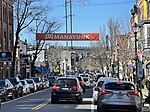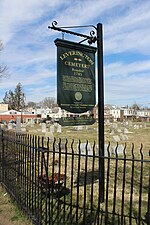St. John the Baptist Roman Catholic Church, Manayunk
1831 establishments in Pennsylvania19th-century Roman Catholic church buildings in the United StatesAll pages needing cleanupReligious organizations established in 1831Roman Catholic churches completed in 1906 ... and 2 more
Roman Catholic churches in PhiladelphiaWikipedia pages needing cleanup from October 2015

St. John the Baptist Church is a parish of the Roman Catholic Church in the Manayunk section of Philadelphia, Pennsylvania. Established in 1831, it is the tenth oldest parish in the Archdiocese of Philadelphia. The current Neo Gothic church was dedicated on April 1, 1894 and is the spiritual home for Roman Catholics living in the Philadelphia neighborhoods of Manayunk, Roxborough, and Wissahickon.
Excerpt from the Wikipedia article St. John the Baptist Roman Catholic Church, Manayunk (License: CC BY-SA 3.0, Authors, Images).St. John the Baptist Roman Catholic Church, Manayunk
Rector Street, Philadelphia
Geographical coordinates (GPS) Address Nearby Places Show on map
Geographical coordinates (GPS)
| Latitude | Longitude |
|---|---|
| N 40.02561 ° | E -75.219692 ° |
Address
Rector Street 144
19127 Philadelphia
Pennsylvania, United States
Open on Google Maps







